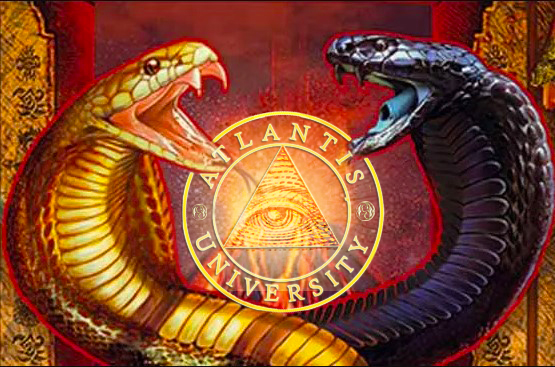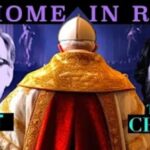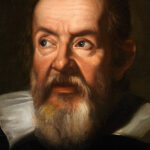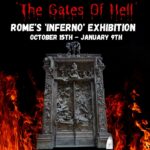
This will be a bit of a “Crash Course” on several topics, but I feel like it’s an important backdrop before we jump into the American Revivals..
In part one we talked about the Asbury revival and its lack of a clear gospel message. We considered the differing definitions of revival and the lack of Biblical precedent for events designed to spur a “renewal” of faith among believers under the New Covenant. Now, we’ll look at the cultural climate surrounding the Reformation and first Revivals.
THE SCIENTIFIC REVOLUTION AND AGE OF ENLIGHTENMENT
“What has been is what will be, and what has been done is what will be done, and there is nothing new under the sun.” (Ecc 1:9)
The Scientific Revolution and Age of Enlightenment are key to The Great Awakenings and their Revivals, as they represent a return to the Mystery School teachings, built upon the serpent’s lie of the “divinity of man.” You know the story.
Now the serpent was more crafty than any other beast of the field that the Lord God had made. He said to the woman,
“Did God actually say, ‘You shall not eat of any tree in the garden’?”
And the woman said to the serpent,
“We may eat of the fruit of the trees in the garden, but God said, ‘You shall not eat of the fruit of the tree that is in the midst of the garden, neither shall you touch it, lest you die.’”
But the serpent said to the woman,
“You will not surely die. For God knows that when you eat of it your eyes will be opened, and you will be like God, knowing good and evil.”
So when the woman saw that the tree was good for food, and that it was a delight to the eyes, and that the tree was to be desired to make one wise, she took of its fruit and ate, and she also gave some to her husband who was with her, and he ate.
Then the eyes of both were opened, and they knew that they were naked. And they sewed fig leaves together and made themselves loincloths. (Gen 3:1-7)
THE SCIENTIFIC REVOLUTION was spearheaded by (Mathematician, Astronomer, Freemason*) Nicolaus Copernicus (1473 – 1543) and culminated in the works of (Theologian, Author, Alchemist and Freemason*) Isaac Newton (1642-1776).


*A Quick Note on Freemasonry
Some will argue that Freemasonry didn’t officially originate until 1717 with the formation of the Grand Lodge of England. But, the philosophy, symbolism, and esoteric teachings of speculative Freemasonry trace back to the Rosicrucians, Knights Templar, Hermeticism, Kabbalah, and ultimately the Ancient Mystery Schools—the religion of the god of this world. Freemasonry was always about “building,” but architecture was merely the outward expression of the reconstruction of “lost ancient wisdom” intent on shaping and controlling society, its end being the deification of man; the ultimate rebellion against God.
Everything the enemy does is a counterfeit, an inversion of the truth.
Now, therefore, you are no longer strangers and foreigners, but fellow citizens with the saints and members of the household of God, having been built on the foundation of the apostles and prophets, Jesus Christ Himself being the chief cornerstone, in whom the whole building, being fitted together, grows into a holy temple in the Lord, in whom you also are being built together for a dwelling place of God in the Spirit. (Eph 2:19-22)
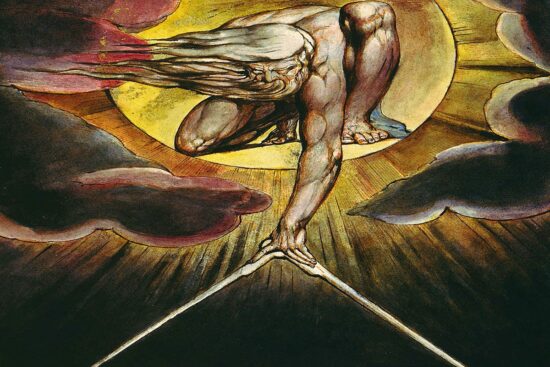
Many Christians believe that Newton was a Christian. But, while he was a Protestant, many of his private works were occult studies, which is not surprising given his secret society affiliation.

But getting back to the Enlightenment Science, it’s been argued that the development of modern science should be presented in two-phases:
- THE SCIENTIFIC RENAISSANCE (15th and 16th centuries) which focused on restoring the natural knowledge of the ancients.
- THE SCIENTIFIC REVOLUTION (17th century) when scientists shifted from recovering ancient knowledge to innovation.
From Wikipedia,
“The era of the Scientific Renaissance focused to some degree on recovering the knowledge of the ancients and is considered to have culminated in the 1687 Isaac Newton publication Principia which formulated the laws of motion and universal gravitation, thereby completing the synthesis of a new cosmology.” Wikipedia
Heliocentrism’s role in the great deception of our age is huge, but we’ll leave it for another time.
THE ENLIGHTENMENT (roughly 1715-1789) followed on the heels of the Scientific Revolution. It represented a great shift away from faith in absolute religious or political authority to faith in scientific reason (grounded in empiricism) and secularism (separation of religion). It was the birth of Humanist Individualism with optimistic ideas about human nature, seeing man as essentially “good,” instead of what the Bible teaches, that man is “dead in his sin,” having no life in himself whatsoever.
So Jesus said to them, “Truly, truly, I say to you, unless you eat the flesh of the Son of Man and drink His blood, you have no life in yourselves. (Jn 6:53)
And you were dead in your trespasses and sins (Eph 2:1)
When you were dead in your transgressions and the uncircumcision of your flesh, He made you alive together with Him, having forgiven us all our transgressions (Col 2:13)
Francis Bacon (1561–1626), occultist and author of The New Atlantis, is known as the “Father of Empiricism.” He is recognized for developing the scientific method and a philosophy of science that emphasized observation, experimentation, and inductive reasoning. Enlightenment ideas were largely based on the works of Bacon and fellow Freemason John Locke (1632–1704). (Did you know Locke was involved in the African slave trade? I didn’t).
Anyway, the Scientific Revolution and Age of Enlightenment established a New way of thinking, sweeping away the Old. (In step with the Enlightenment, Great Awakening preachers referred to the “New Light” as a fresh revelation of the gospel as opposed to the “Old Light” held by conventional Christianity.)
Championed as progress, the Scientific Revolution and Age of Enlightenment were in reality merely a return to ancient Mystery School thought.
We’ve read and seen videos about the Mystery Schools, their mother/son sex cults, sun worship and seen the symbolism just about everywhere. But to understand how the Enlightenment affected the Great American Revivals, we need to take a more practical look at how the Mystery Schools controlled the ancient world. A good way to do that, and since Enlightened thinker Francis Bacon wrote about it, is to visit the subject of Atlantis.
ATLANTIS UNIVERSITY
Where is the one who is wise? Where is the scribe? Where is the debater of this age? Has not God made foolish the wisdom of the world? (1 Cor 1:20)
In Francis Bacon’s unfinished utopian novel “The New Atlantis,” (published posthumously in 1626), the Americas are presented as the location of the lost mythical civilization of Atlantis. From the novel:
“[A]bout three thousand years ago, or somewhat more… the great Atlantis, (that you call America)… abounded then in tall ships… Of all this, there is with you sparing memory, or none; but we have large knowledge thereof.” (Francis Bacon, The New Atlantis).
Several physical places have been suggested as the possible location of Atlantis. But as Freemason Manly P Hall explained in his lectures, Bacon’s Atlantis was not a city or country. Rather, his novel presents a UNIVERSITY OF THOUGHT. This is huge in understanding Christianity and modern society today. Like universities today, Bacon’s Atlantis taught all manner of public thought, including science, mathematics and governance. In light of that, it is noteworthy how many of our universities, Bible colleges and seminaries have been founded by the Jesuits and Freemasons.
“During that same year, 1303, Pope Boniface VIII … founded the Studium Urbis, Rome’s first university. The university was erected outside of the Vatican walls, this … catalysed a new relation between the City of Rome and the many scholars that arrived at the new university from around the world.” Uniroma (More on this by Henry Makow)
Plato (5th Century BCE) also describes the mythical city in his work, “Timaeus.” Hall discusses Plato’s Atlantis in his “The Secret Destiny of America.”
“The destruction of Atlantis, as described by Plato… can be interpreted as a political fable. The tradition of the Lost Empire as descended from Solon was enlarged and embellished according to the formulas of the Orphic theology; but it does not follow necessarily that Plato intended to disparage the idea that a lost continent had actually existed west of Europe. Plato was a philosopher; he saw in the account of the fall of Atlantis an admirable opportunity to summarize his convictions concerning government and politics.” (Manly Hall, The Secret Destiny of America)
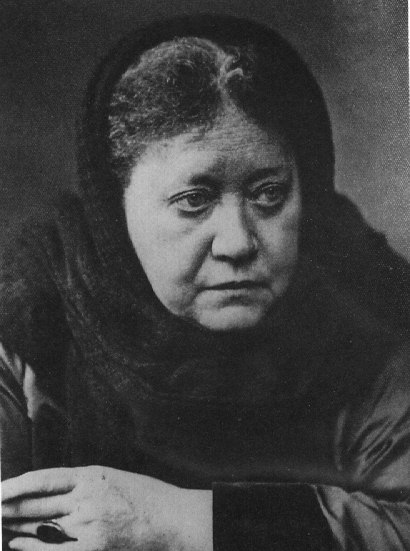
The idea of Atlantis being a physical place was popularized by Theosophist Helena Blavatsky (1831-1891)… Well… her and Donovan.

Regardless of whether it ever existed physically, it’s likely that these same intellectual ideals governed the great civilization in Noah’s day when men did “only evil all the time.” Genesis chapter 11 records how, after God destroyed that evil generation with the great flood, men re-formed “Atlantis” in Babylon. God dispersed the people by confusing their languages and separating the earth in the days of Peleg, but Atlantis was formed once again in Alexandria and Athens, and as Bacon’s novel suggests, in the great Mayan and Aztec empires.
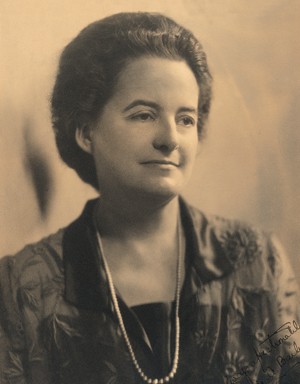
These Atlantean ideals are the “natural knowledge of the ancients” that was “re-discovered” by the key figures of the Scientific Renaissance, Scientific Revolution and Age of Enlightenment. The same ideals are the stated goals of those wanting to bring about a great coming world religion and governance. What is remarkable is how they are utilizing Christianity to bring it all about. The blend of Enlightenment thought and Protestantism that holds the “betterment of humanity” over the individual soul brings the words of Theosophist Alice Bailey (1880- 1949) to mind.
“The Christian church in its many branches can serve as a St. John the Baptist, as a voice crying in the wilderness, and as a nucleus through which world illumination may be accomplished… Its work is intended to be the holding of a broad platform. The church must show a wide tolerance, and teach no revolutionary doctrines or cling to any reactionary ideas. The church as a teaching factor should take the great basic doctrines and (shattering the old forms in which they are expressed and held) show their true and inner spiritual significance. The prime work of the church is to teach, and teach ceaselessly, preserving the outer appearance in order to reach the many who are accustomed to church usages. Teachers must be trained; Bible knowledge must be spread; the sacraments must be mystically interpreted, and the power of the church to heal must be demonstrated…
There is no question therefore that the work to be done in familiarising the general public with the nature of the Mysteries is of paramount importance at this time. These Mysteries will be restored to outer expression through the medium of the Church and the Masonic Fraternity, if those groups leave off being organisations with material purpose, and become organisms with living objectives.” (Alice Bailey, The Externalisation Of The Hierarchy, pp. 510, 514) [bold added]
Is America a Freemasonic/Jesuit experiment? Is its tolerant, self-worshipping / social-cause-promoting “Christianity” all designed to extinguish the gospel, undo the Reformation and bring about a return to Catholicism +/aka the Mystery Schools? Don’t doubt it.

If you’ve been following the development of the New World Order for any length of time, you’re aware of these changes in the churches today. But there’s still a lot of confusion and arguing over various church doctrines, all of which really boil down to Law and Mysticism.
Then from his mouth the serpent spewed water like a river, to overtake the woman and sweep her away with the torrent. (Re12:15)
Let’s look at what else was going on in the days of Bacon and Locke. Roughly chronologically we have:
- Scientific Renaissance (1400’s -1500’s)
- Reformation (early 1500s)
- Reformers and Separatists begin to settle in North America (1500s – 1600s)
- Francis Bacon (1561-1626)
- Jesuit Missions to North America (late 1500s – early 1600s)
- John Locke (1632–1704)
EUROPA, AMARU & THE MISSIONS OF THE JESUITS
As Protestants fled the persecution of the Roman Catholic Church in Europe in the 16th-17th centuries, the Jesuits (recall the Jesuit Oath in part one) were conquering and converting the people of the Americas to Catholicism (Missions of the Jesuits).
In South America, the god of the Aztecs and Mayans was Quetzlcoatl, known as “the bearded white god” so when the bearded white man came to their land the natives believed that was their god returned, making the mission to convert the natives more successful there, although the conversions played out as more of a “blending” of faiths.
In North America and Peru, Quetzlcoatl was known as the two-headed god Amaru. Like the Phoenix;
“Amaru represents the blending of the realms, it represents the sudden and sometimes violent, overturning of the established order.” – SymbolSage
The tribes of North America and Peru resisted conversion, and the Jesuit Missions in North America arguably played out as more of an ‘ethnic cleansing’ there… just as (just in time for?) the settlers to begin arriving from Europe.
WHAT’S IN A NAME?
America/Amaruca
We’re told that America was named after the explorer Amerigo Vespucci. But the name more likely comes from the Incan two-headed serpent god “Amaru” (“Plumed Serpent” or “Feathered Serpent”). “Amaruca” is literally translated “Land of the Plumed Serpents.”
Europe/Europa
Europa, the goddess after which Europe is named, is an appellation of Isis, or the “goddess of 10,000 names,” including Mary, the “Queen of heaven.”
If these “gods” are indeed principalities over the regions of the earth, Protestantism and its Revivals could never have flourished in Europe like it did in America.
More on Europa: https://udayton.edu/imri/mary/p/pope-pius-xii-and-mary.php, https://history.info/on-this-day/1955-connection-between-the-european-flag-and-the-blessed-virgin-mary/
This history has much bearing on America’s “Great Revivals,” which served to both lead Christianity back to Papal teaching and the Mystery Schools to cover for its false gospels which were unable to produce genuine Christian experience.
…turning to a different gospel – which is really no gospel at all. Evidently some people are throwing you into confusion and are trying to pervert the gospel of Christ. (Gal 1:6-7)
Next, we will look at some of the most prominent Revivalists and the new teachings they brought.
Revivals Pt1 – Asbury: Let’s Talk About Revivals
Revivals Pt2 – Enlightenment in the Land of the Plumed Serpent
Revivals Pt3 – Mystery Schools, The RCC and the Reformation
Revivals Pt4 – The First Great Awakening & The Enigmatic George Whitefield
Revivals Pt5 – The Brimstone and Mysticism of Jonathan Edwards
Revivals Pt 6 – John Wesley (1 of 2) – The Mystery School Dialectic and Christian Mysticism
Revivals Pt 7 – John Wesley (2 of 2) More Mystics & Papal Doctrines of Men
Revivals Pt8 – From Wesley to Finney By Way of Count Zinzendorf
Revivals Pt9 – Charles Grandison Finney, Freemasonic Moralism and Modern Evangelicalism
Revivals Pt10 – The Pagan “Virus“
Revivals Pt11 – The Third Great Awakening: Pentecostalism!
Revivals Pt12 – Pentecostalism Pt2: The Founders of Pentecostalism
Revivals Pt 13 – Social Justice Pt 1 – They Don’t Mix
Revivals Pt 14 – Social Justice Pt 2 – A City Upon A Hill
Revivals Pt 15 – Christ in You vs Millennialism
Revivals Pt 16 – The Counterfeit Enlightenment Pt 1
Revivals Pt 17 – The Counterfeit “Enlightenment” Pt2: The Dark Ages and Golden Age of Islam
Revivals Pt 18 – The Counterfeit “Enlightenment” Pt 3: Islam In the Bible?
Revivals Pt 20 – The Counterfeit “Enlightenment” Pt5: Placing Man Upon An Esoteric Sphere
Revivals Pt21 – The Counterfeit “Enlightenment” Pt6: The Image of the Beast
Revivals Pt22 – Crowning the Lord of the Earth: The Cosmati Pavement
Revivals Pt24 – The Great American Mythos Pt2: A Whole New Mystically Enlightened World
Revivals Pt25 – Creating the American Mythos – Christopher Columbus: The Great American Hero Pt1
Revivals Pt 26 – Christopher Columbus Pt 2 – The Namesake Goddess of a “Christian” Nation
Revivals Pt27 – The Witchcraft of Numbers
Revivals Conclusion Pt2 – What Is The Gospel?
Revivals Conclusion Pt3 – Subversion – From Revivalists to Modern Times





